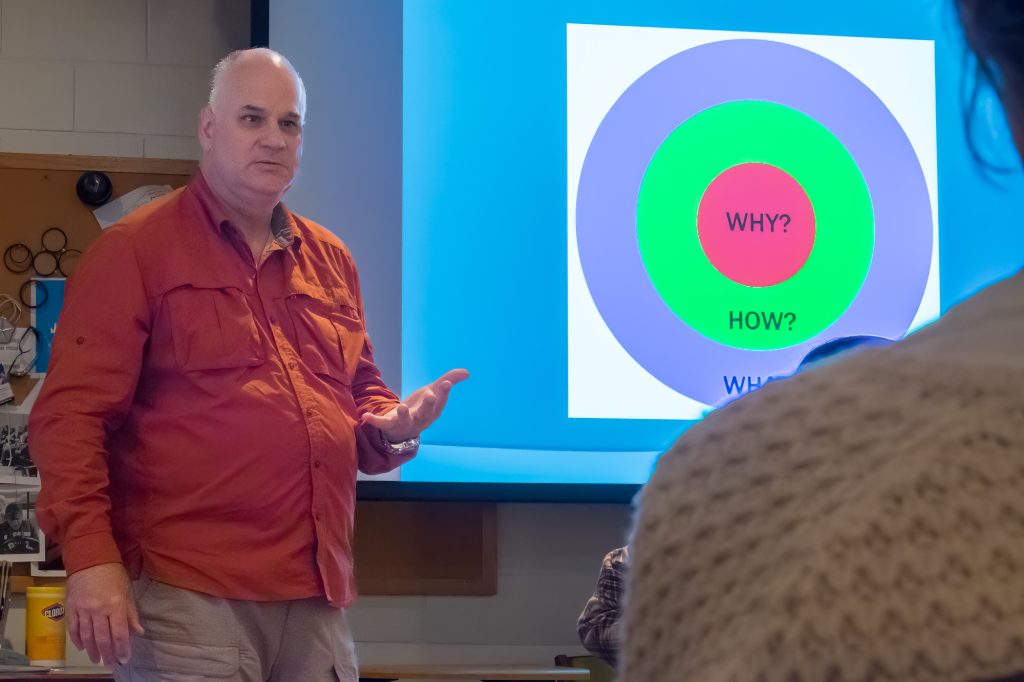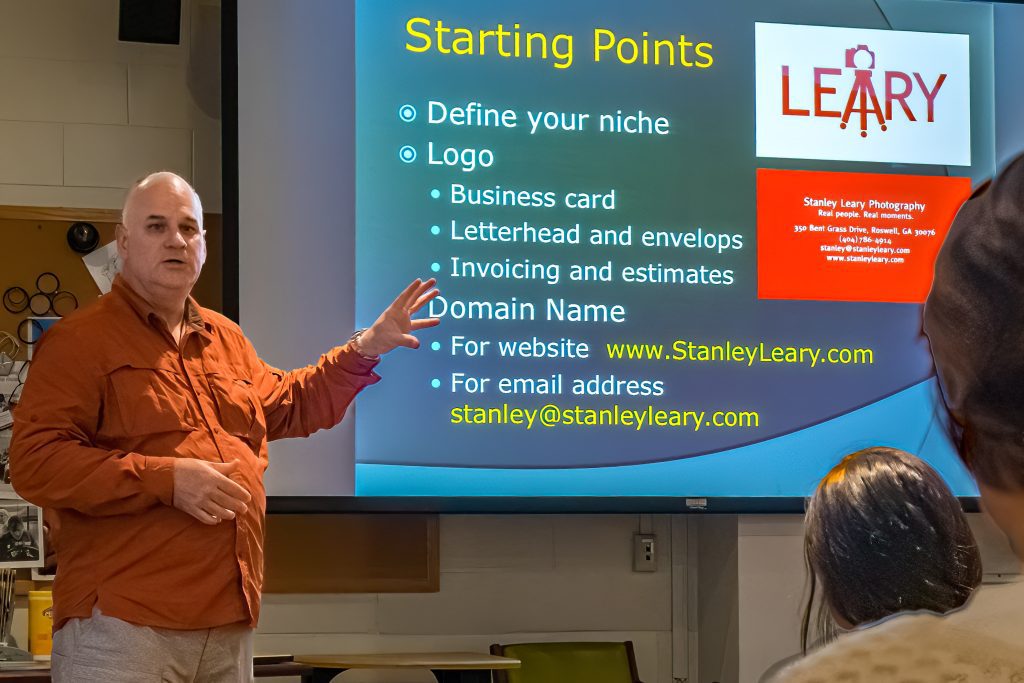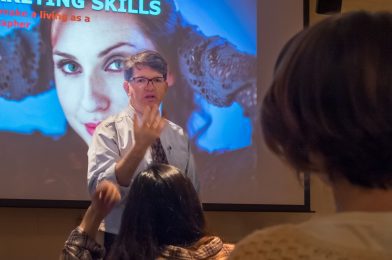| Mark E. Johnson, Senior Lecturer of Photojournalism at University of Georgia, Fuji X-E2, 18-55mm, ISO 6400, ƒ/9, 1/20 [photo by Robin Nelson] |
I have been speaking to college photography students for many years. Mark E. Johnson has invited me to speak for the last several years to his students at the Grady College of Journalism and Mass Communication at UGA. This photo shows Mark talking to the class just before he introduced me.

GROSS – EXPENSES = PROFIT
I talk to the class about Business and Marketing Skills: How to make a living as a photographer. For most of the course, I explained all the expenses the students needed to consider. The problem is getting a realistic understanding of all the money going out. Most people can see what is coming in but struggle with going out to run a healthy business. Remember, knowledge is power. That power allows you to ask for the right price for the job.

Just like the storyline starting with the WHY? is what I was trying to drive home.
The only thing stopping the students in the class from doing what they want starting now is only income to cover their expenses. So when I asked them what stood in the way of them doing what they wanted to do right now, it took a while for them to see money was the obstacle.

PANIC
There is no other way to describe the students’ facial expressions than Panic-stricken. After I showed them some ballpark numbers for living and business expenses, they were intimidated that they would have to ask people to pay them a figure they were uncomfortable with themselves.
The wake-up was happening in the class. I have to charge WHAT? But they also understood why–to pay all the expenses like their mortgage and a car payment, for example.
Derek Jeter talked about how he was failing 70% of the time. That is what a 300+ batting average is about—falling 7 out of 10 times at bat.
I told the students that most successful businesses are usually 90% failures. This is because 9 out of 10 people will not buy your product.
Mark Johnson made a fascinating comment in class. He asked them how many things they bought the last time they went grocery shopping. He then pointed out how many products were in the store that they didn’t buy.
SUMMARY
The crisis is avoidable. You need to know all your expenses and charge enough that your income is more significant than your expenses.
In some ways, this is like the ice bucket challenge. But being willing to take that ice-cold water bath is worth it.
Do you know your expenses?

